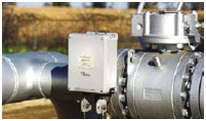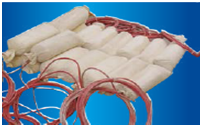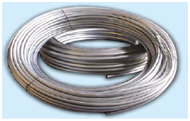Overview:
Pipelines running into close proximity with electric power transmission and distribution systems will occur electromagnetic field created by the alternating current (AC) [expands and collapses and changes direction 120 times per second]. An alternating electromagnetic field will exhibit an induced voltage on the pipeline. In addition, power conductor faults to ground can cause substantial fault currents in the underground structure. Stray alternating currents can cause corrosion on pipelines,damage to the coating, resulted in metal loss and pipeline leak. Even though the corrosion weight loss for AC currents is less than for equivalent DC currents, the magnitude of AC stray current is often large–hundreds of amperes under electromagnetic induction and thousands of amperes during power line faults. These high current levels can produce a shock hazard for personnel and can damage the structure and related equipment.
Three basic methods by which AC currents and voltages appear on metallic structures near AC power lines are:
- Electrostatic coupling,
- Electromagnetic induction and
- Resistive coupling.
Mitigation Modeling is used to compute/model the AC interference pattern in cases where either one component (OHL or Pipeline) in absent or energized.The computer modelling of the AC interference between overhead power lines and the buried pipelines has been carried out using the Safe Engineering Services software “Right of Way - Induced AC Prediction Program” and it helps in various ways:
- Establish the zones of the pipeline network under risk of AC interference;
- Determine the level of AC interference in relation to touch potentials on the pipeline, soil potential rise, step potentials and coating stress;
- design AC mitigation solutions;
- fix the amount and locations of AC drainage systems;
- study impact of modifications to the pipeline network on AC mitigation.
Physical Testing:
- AC Testing
- Measurement of AC voltage to Ground
- Pre Testing (In case of Existing OHL & Pipeline)
- Safety
Implementation of AC Mitigation Measures:
As per the NACE 0177-2007 the steady state induced AC voltage not more than 15V.Based on the AC Mitigation Computer Modelling results, if the steady state induced voltage more than 15V there will be mitigation measures are required.

Polarization Cell Replacement (PCR)

Zinc Grounding Cell

Zinc Ribbon Anode
Download : AC Mitigation
Download : Full Catalogue
